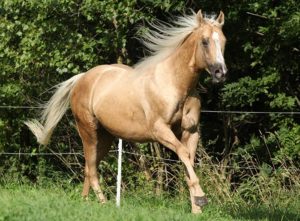
Built to Last: Ideal Equine Conformation
Assessing a horse’s limbs, feet, and body can help you and your veterinarian identify anatomical traits that could end up being performance-affecting liabilities.

Assessing a horse’s limbs, feet, and body can help you and your veterinarian identify anatomical traits that could end up being performance-affecting liabilities.

A single-toe format “outweighed the costs” of multiple-toe formats as horses gained body mass and grew longer legs.

Take a look at the evolution of diagnosing distal limb lameness in sport horse practice with Dr. Brendan Furlong.

Learn about how horse joints work and how you can keep your horse’s joints healthy with this step-by-step visual guide.

Learn about the structure and function of your horse’s powerful hind limbs with Dr. Roberta Dwyer of the University of Kentucky’s Gluck Equine Research Center.
Be it for racing, reining, or riding, a horse needs to be put together properly; but does a horse need to be put together perfectly?

Learn about the structure and function of your horse’s forelimbs with Dr. Roberta Dwyer of the University of Kentucky’s Gluck Equine Research Center.
Tendon and ligament injuries often go hand in hand with horses involved in vigorous athletic pursuits. However, many tendon and ligament injuries can be avoided through proper conditioning and training regimens and by not pushing a horse beyond its limits in racing or other competitions.
Like keeping the pistons of an engine lubricated for smooth, easy movement, the tendon sheaths of a horse function similarly by providing a friction-free environment in which tendons can move.
Stay on top of the most recent Horse Health news with
© 2022 Copyright Statement dolor sit amet, consetetur sadipscing User Terms, sed diam nonumy eirmod tempor invidunt ut labore et dolore magna aliquyam erat, sed diam voluptua. At vero eos et accusam et justo duo dolores et ea rebum. Stet clita kasd gubergren, no sea takimata sanctus est Lorem ipsum dolor sit amet.
"*" indicates required fields